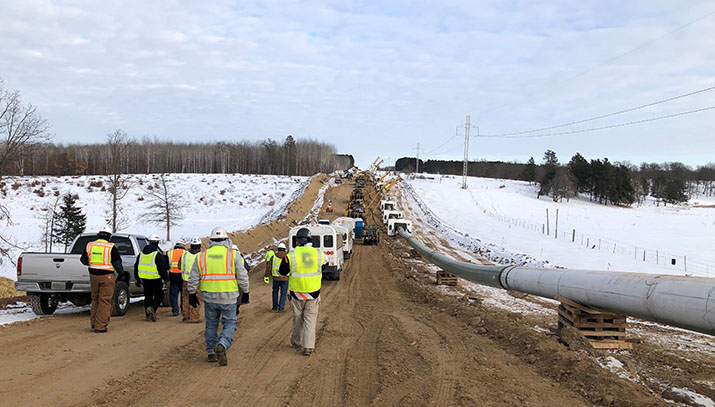How MNOPS is making Line 3 safe for Minnesota
Jan. 28, 2021

You might have heard about the construction of the new Enbridge Line 3 pipeline, but you may not have a handle on who is involved and how. One of the most important things to know is safety is a priority, and the Minnesota Department of Public Safety Office of Pipeline Safety (DPS-MNOPS) is an integral part of making sure this project is completed safely and correctly.
First, a bit of background. The original Line 3 was built in the 1960s. The crude-oil pipeline extends 1,097 miles from Edmonton, Alberta, to Superior, Wisconsin. Enbridge is replacing Line 3 to maintain safety standards, reduce future maintenance, and minimize disruptions to landowners and the environment. They’re also enlarging the pipeline’s diameter – the new one will be 36 inches, as opposed to 34.
The part of the pipeline that goes through Minnesota is 337 miles long and is divided into five sections, or “spreads,” which are all under construction simultaneously. Rotating teams of DPS-MNOPS inspectors visit the spreads each week, making sure the pipeline is safely constructed and that Enbridge follows their procedures through the entire process. The design and construction of the pipeline is subject to many federal safety regulations. Enbridge must allow inspection of its projects and systems operations to ensure compliance. DPS-MNOPS and federal pipeline inspectors work together to conduct these inspections.
When we say DPS-MNOPS is “inspecting” the pipeline, what exactly do we mean? First, it’s important to know what they don’t do. DPS-MNOPS does not and will not operate the pipeline. Nor did DPS-MNOPS grant any permits for the construction or operation of the pipeline.
The job of DPS-MNOPS is to make sure the pipeline is being constructed safely and in compliance with regulations. For example, DPS-MNOPS inspectors:
Review construction processes and the materials used.
Ensure qualified workers are constructing the line.
Review welds that hold together each section of pipe.
Review ultrasonic scans of the welds of each section of pipe.
Visually inspect the pipe itself.
Visually inspect the trench in which the pipe will sit (smooth trenches are critical to the long-term success and safety of the pipeline).
A DPS-MNOPS inspector’s job goes beyond observing. They ask questions, and speak with workers, supervisors and other private inspectors (there are inspectors for each trade being completed along the line — excavating, backfilling, coating and welding, for example). Inspections are a vital part of safety for any pipeline. DPS-MNOPS inspectors carry out this role throughout our state each and every day to help keep Minnesota safe.

